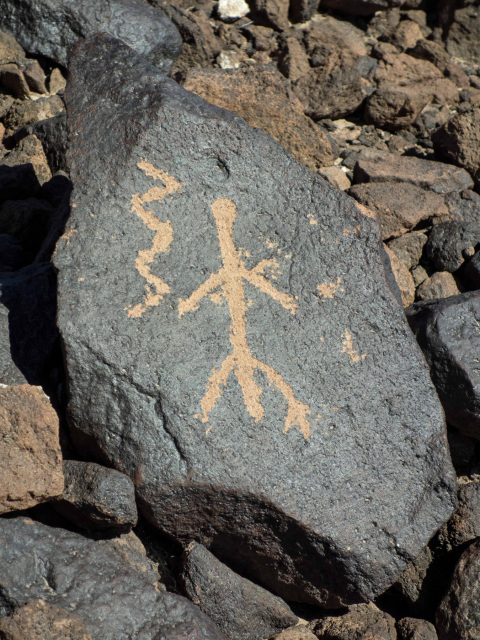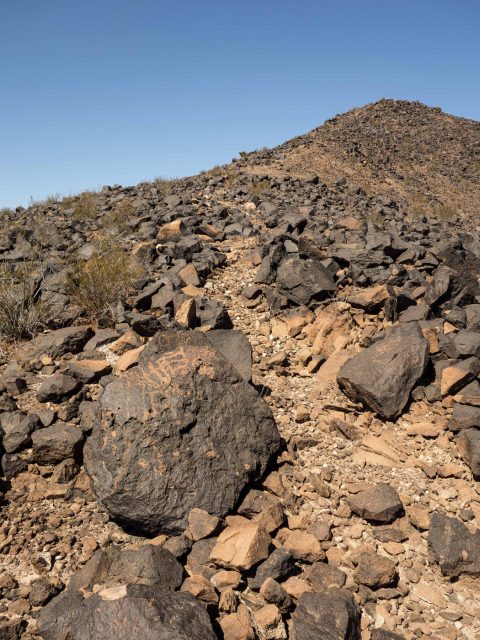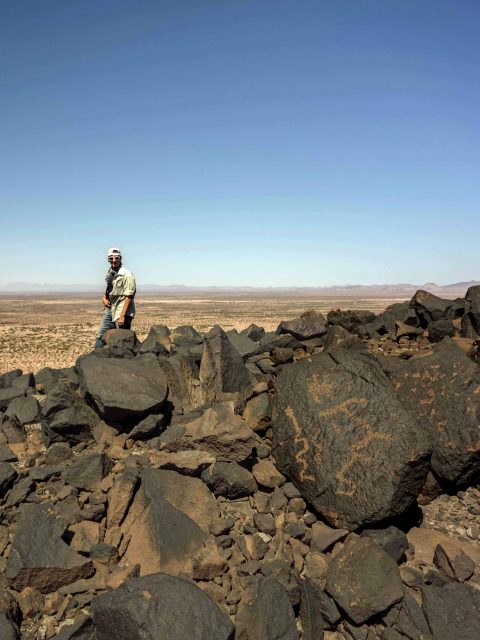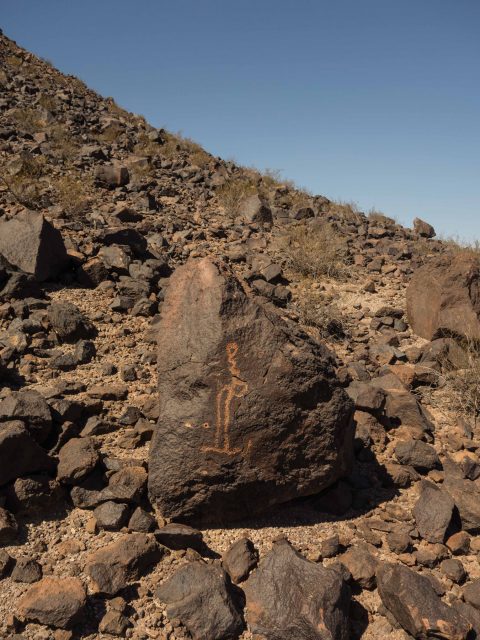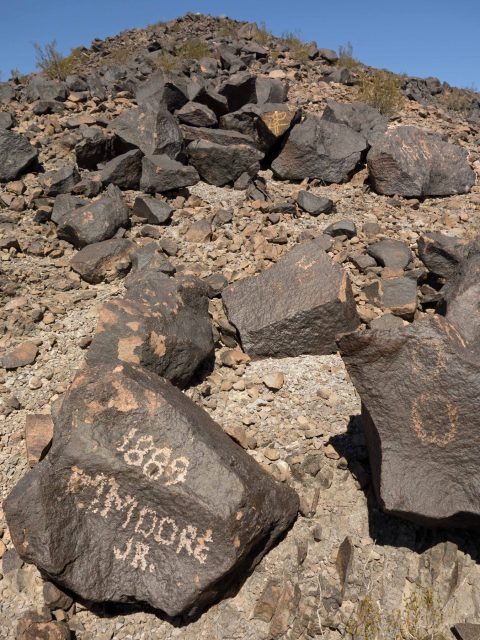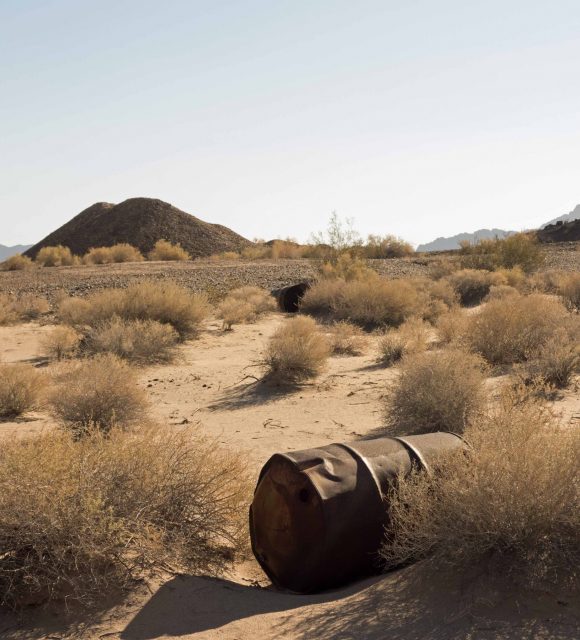- Home
- >
- Preservation Archaeology Blog
- >
- New Site Protection Acquisition: The Fleming Parce...
(May 30, 2017)—Another site protection success! On May 22, 2017, we closed on the Fleming parcel, 120 acres in the lower Gila River valley. We purchased 40 acres, and Gail Fleming, Trustee for the Lawrence J. and Gail Fleming Trust, donated an additional 80 acres. The parcel is a complement to our Quail Point acquisition and our Great Bend work.
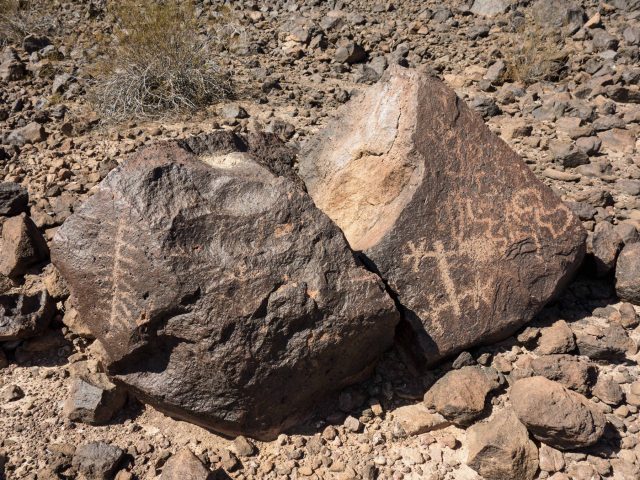
The parcel encompasses portions of two previously recorded archaeological sites. One is a small, limited-use camp site with a sparse concentration of Patayan ceramics, flaked stone, ground stone, historic glass, and metal artifacts. Approximately 5 percent of the site area falls on the Fleming parcel. To the north, beyond the Fleming parcel, are additional dune sites exhibiting small assemblages of flaked and burned stone, consistent with Archaic period encampments from which people were using surrounding mesquite fields.
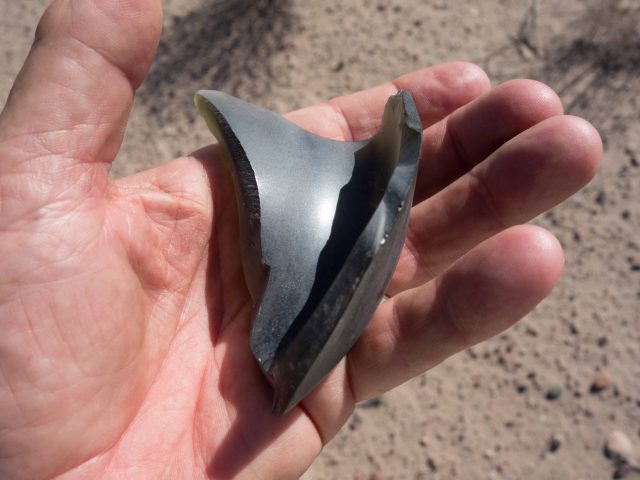
The major attraction of the Fleming property, however, is the much larger site that encompasses the hill.
Known as Texas Hill, this site provides a rare instance of an integrated array of Archaic features, including petroglyphs, trails, clearings, rock piles, and rock-lined circles. Petroglyphs are concentrated along the southern and eastern base of the hill, and atop the ridges, with the latter included in the Fleming parcel. In addition, several dozen associated rock features fall within this parcel, as does a lined- and rock art-adorned trail that integrates all features into a cohesive network of activities. An estimated 300 petroglyphs on 50 or so panels fall within the Fleming parcel.
Based on the very limited number of artifacts atop the hill and around the rock circles, the archaeology of the place seems to represent Archaic ritualism focused on mountaintops. There is also a lesser representation of Patayan and Hohokam-esque rock art, as well as a thin veneer of historical graffiti, inscriptions, and rock art.
Similar assemblages of Archaic features are known from Agua Caliente Mountain and Rocky Point, both upstream of the Fleming parcel. Those sites have been heavily impacted by subsequent use of the landforms, however. The integrity of this site is superb, with a negligible amount of petroglyph graffiti (one with a date of 1889). A more accessible site adjacent to the Fleming parcel has received the brunt of historical disturbance and vandalism.
It is not the abundance of petroglyphs atop the hill that makes the newly acquired site significant, though—rather, it is the noteworthy cohesion of rare, poorly understood Archaic features and the impressive state of their preservation.
In addition to the archaeological resources, the parcel is of considerable historical importance because it was a landmark along the Southern Emigrant Trail. In 1859 the Butterfield Overland Mail Company established the Texas Hill Station a few miles away. And in 1879, a formal camp, near the landform, served a supply station for the K of A Mine. A hot spring was once located at the eastern foot of the hill, and there are historical accounts of local indigenous communities (possibly O’odham or Quechan) using the springs.
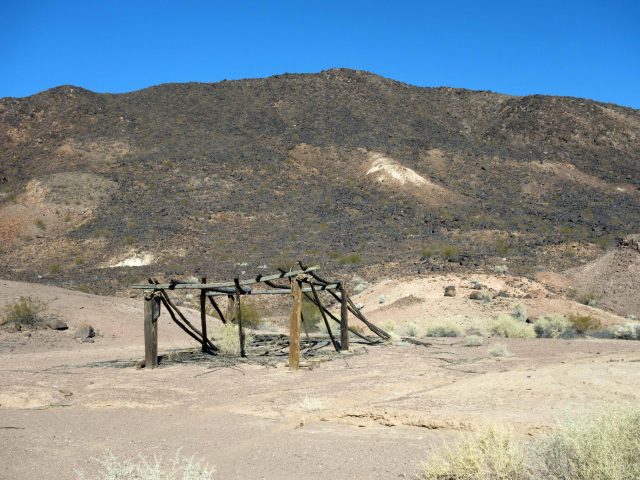
The hot springs were undoubtedly one of the place’s attractions, and probably figured into its position as a place of ritual importance over several millennia.
Archaeology Southwest thanks the Smith Family Trust for Site Protection, and in loving memory of William T. Lawrence, for making this site protection acquisition possible.
Explore the News
Related to This
-
Page Places We Protect
